


This article highlights seven effective treatment options for managing slow atrial fibrillation (AFib) that can significantly improve heart health. It gently emphasizes the importance of personalized treatment plans, medication management, and lifestyle modifications. Furthermore, advanced therapies like cardioversion and pacemaker implantation are discussed, all supported by evidence that tailored approaches can enhance patient outcomes and quality of life.
Are you feeling uncertain about your heart health? You're not alone, and it's completely understandable to have concerns. Each treatment option is designed with your unique needs in mind, ensuring that you receive the best possible care. By focusing on what works for you, we can help you navigate this journey with confidence.
As you consider these options, remember that support is always available. Whether through healthcare professionals or community resources, reaching out for help can make a significant difference. You deserve to feel empowered and informed about your health. Together, we can work towards a healthier future.
Understanding slow atrial fibrillation (AFib) can feel overwhelming for many. This heart condition impacts millions and brings unique challenges in treatment and management. With a variety of treatment options available—ranging from personalized medication plans to innovative procedures like cardioversion and pacemaker implantation—individuals facing AFib have many resources to explore. Yet, the complexity of slow AFib raises an important question: how can patients navigate these diverse treatment landscapes to discover the most effective strategies for their unique needs? This article gently delves into seven impactful treatment options that aim not only to improve heart health but also to empower patients on their journey towards better cardiovascular well-being.
At Amavita Heart and Vascular Health, we understand that personalized treatment plans are crucial for effectively managing slow afib treatment. Each individual undergoes a thorough assessment to determine their unique health profile, allowing our dedicated team to craft a tailored treatment strategy that aligns with your personal needs and lifestyle. This individualized approach not only enhances treatment effectiveness but also strengthens the client-provider relationship, ensuring that you feel supported throughout your healthcare journey.
Recent advancements in precision medicine, such as genetic testing and AI-driven diagnostics, empower our clinicians to refine treatment options, leading to improved outcomes. Our cardiologists emphasize that understanding your specific circumstances is essential for optimizing care, as personalized strategies can significantly reduce the risk of complications associated with slow afib treatment.
Key aspects of Amavita's personalized treatment plans include:
Furthermore, our commitment to innovative research and community outreach, including the Miami Initiative to Stop Amputation (MISA), underscores our dedication to enhancing cardiovascular care and improving the quality of life for individuals navigating this complex condition. By prioritizing individualized care, we are devoted to improving your quality of life as you undergo slow afib treatment. Remember, you are not alone on this journey; we are here to support you every step of the way.
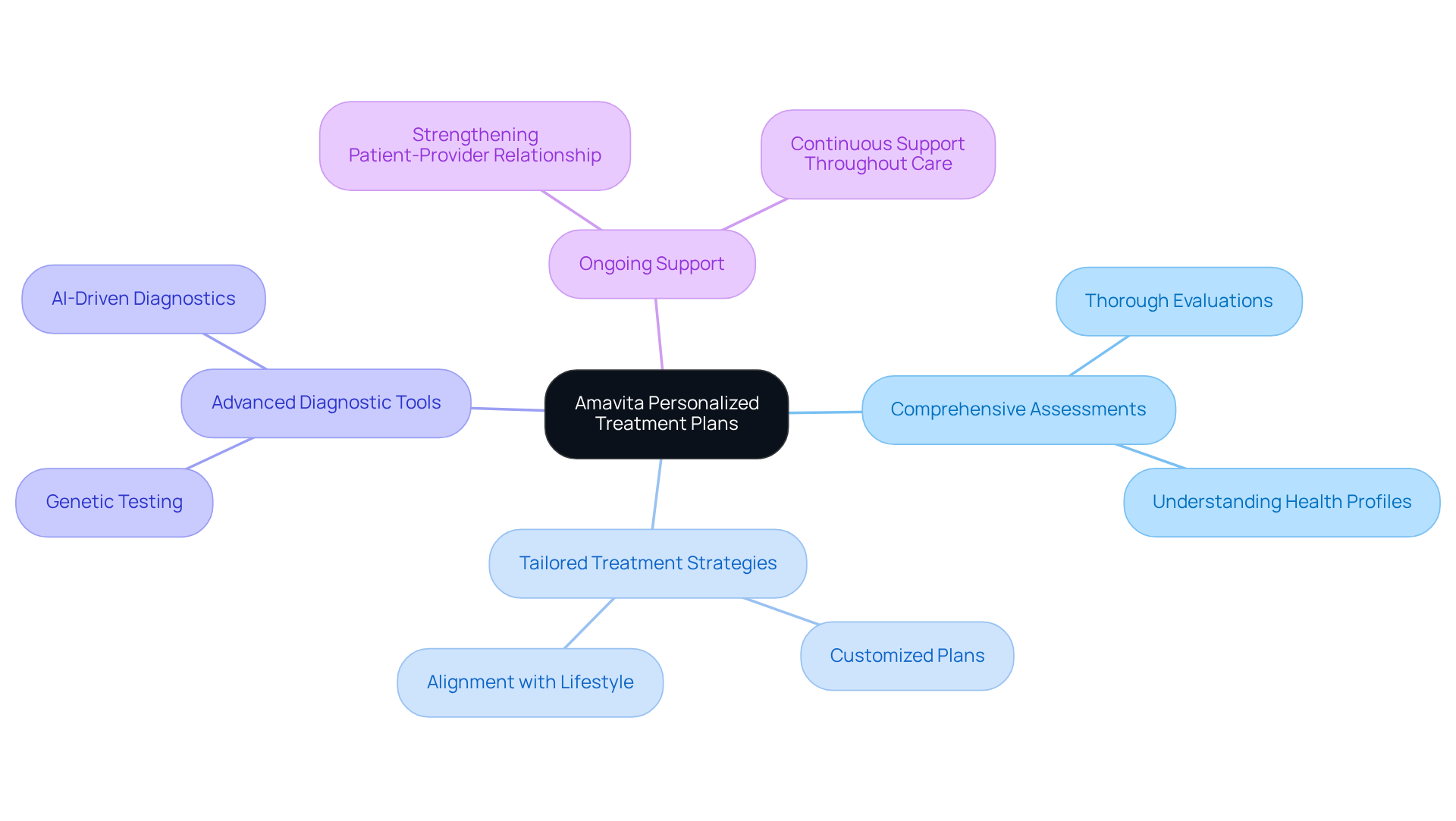
Effective medication management plays a crucial role in the slow afib treatment, especially for our elderly patients who often face various health challenges. It’s important to know that current guidelines recommend the use of anticoagulants, like direct oral anticoagulants (DOACs), to help prevent blood clots. Additionally, rate control agents such as beta-blockers or calcium channel blockers are suggested for effective slow afib treatment to manage heart rhythm. Recent studies have shown that adhering to these medications can significantly lower the risk of stroke and other complications associated with AFib. For instance, one study found that individuals receiving pharmacist-led interventions had adherence rates of 91.8%, compared to 79.3% in standard care. This highlights how tailored support can make a real difference in medication compliance.
Regular follow-ups are vital to adjust dosages and monitor for any side effects, particularly in older adults who may be taking multiple medications. Geriatric cardiologists stress the importance of following prescribed regimens for slow afib treatment, as non-adherence can lead to serious risks, including life-threatening arrhythmias. They encourage open dialogue between patients and healthcare providers, inviting individuals to share any concerns they may have about their medications. This collaborative approach not only enhances treatment effectiveness but also empowers individuals on their health management journey, reminding them that they are not alone in this process.
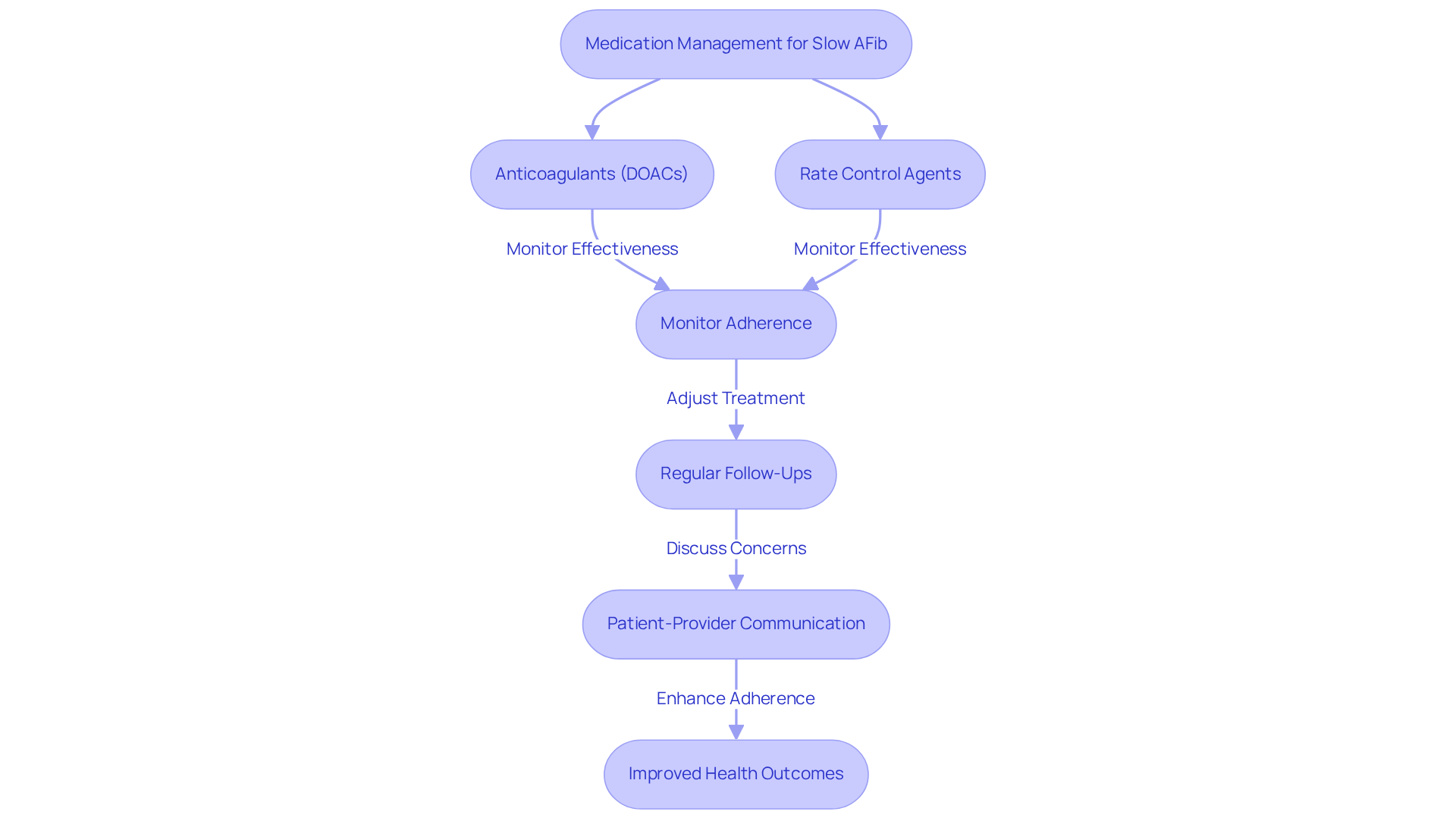
Cardioversion therapy is an important option for managing slow afib treatment, especially for those experiencing significant symptoms. This procedure can be performed either electrically or chemically, aiming to restore a normal heart rhythm. Cardiologists emphasize that successful cardioversion can lead to improved heart function and a better quality of life. In fact, electrical cardioversion boasts a success rate exceeding 90%. However, it's important to note that many individuals may experience a recurrence of atrial fibrillation shortly after the procedure.
At Amavita Heart and Vascular Health, our geriatric cardiologists carefully assess each individual’s eligibility for cardioversion. They consider factors such as how long the atrial fibrillation has been present and the overall health of the person. Current statistics indicate that approximately 51.3% of older individuals who undergo rhythm control strategies experience AFib recurrence within a year. This highlights the importance of ongoing management and monitoring after the procedure. We often recommend that individuals take anticoagulants for three to four weeks before and after the procedure to help prevent blood clots.
Dr. Martinez-Clark, with his Harvard education and extensive cardiovascular expertise, ensures that advanced tests are effectively integrated into your comprehensive care plan. This approach paves the way for improved cardiovascular health. Ultimately, cardioversion can be a vital intervention for older individuals undergoing slow afib treatment, leading to better outcomes. However, it is essential to remain aware of the potential risks associated with the procedure, such as the possibility of blood clots forming in the left atrium, which could lead to a stroke if dislodged.
If you have concerns about your heart health or the cardioversion procedure, please reach out. We are here to support you every step of the way.

Making lifestyle changes is vital for enhancing cardiovascular health, especially for those undergoing slow afib treatment. Have you considered how a heart-healthy diet, filled with fruits, vegetables, and whole grains, could positively impact your well-being? Regular physical activity and stress management techniques, like yoga or meditation, can also play a significant role in your journey to better health.
Your geriatric cardiologist is here to work closely with you, helping to set realistic and achievable goals. Together, we can ensure that these changes are not only effective but also tailored to fit your unique lifestyle. Remember, these modifications are meant to be sustainable, allowing you to thrive in your everyday life.
It's natural to feel overwhelmed by these suggestions, but know that you are not alone. We are here to support you every step of the way. Embracing these changes can lead to a healthier, happier life, and we encourage you to reach out for guidance and assistance as you embark on this important journey.
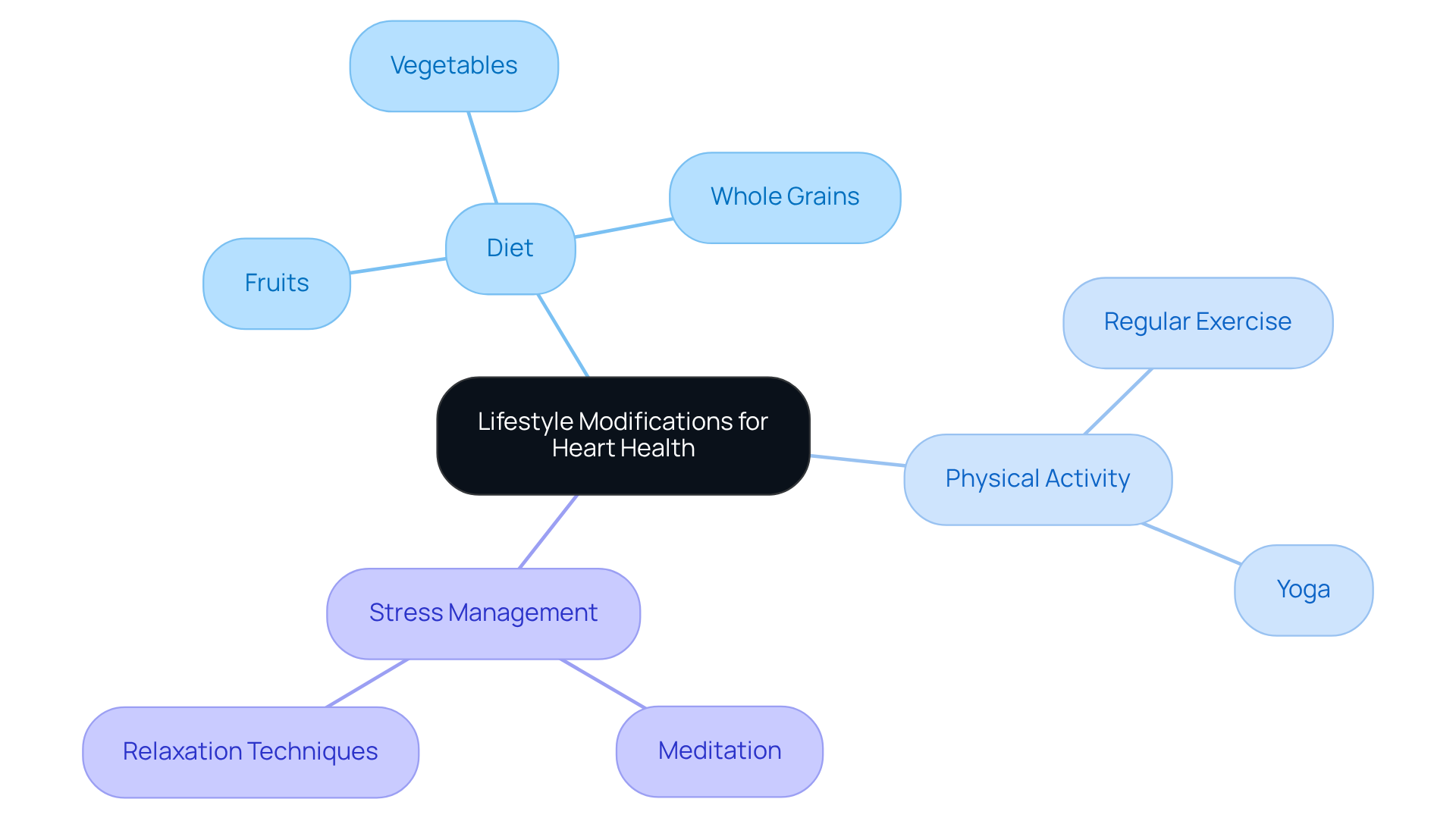
Efficient management of slow afib treatment relies on consistent monitoring, which is crucial for evaluating heart rhythm, medication efficacy, and general well-being. Patients are strongly encouraged to attend follow-up appointments, as adherence to these visits significantly impacts treatment outcomes. However, it’s important to acknowledge that elderly patients often face challenges in maintaining these appointments, with studies showing that only about 50% consistently attend scheduled visits. Barriers such as transportation issues and health complications can make it difficult to keep these important appointments.
Geriatric cardiologists utilize a range of diagnostic tools to observe rhythm changes and modify treatment plans accordingly. Key tools include electrocardiograms (EKGs), which provide immediate insights into heart activity, and Holter monitors, which offer continuous heart rhythm tracking over 24 to 48 hours. These devices are essential for detecting asymptomatic episodes of AF, which can occur in up to 54% of individuals, as emphasized by recent studies. It’s reassuring to know that these technologies are designed to support your health and well-being.
In addition to this, newer technologies such as implantable cardiac monitors (ICMs) are becoming increasingly popular for long-term monitoring. These devices allow for real-time data collection and can significantly enhance slow afib treatment by providing detailed insights into the frequency and duration of AF episodes. Cardiologists stress that using these advanced diagnostic tools not only assists in prompt interventions but also enables individuals to take an active part in their cardiovascular care, fostering a sense of empowerment.
Amavita's CardioElite™ program further enhances this management by introducing an AI-powered cardiovascular management system that utilizes portable, FDA-cleared AI ultrasound technology for bedside cardiac diagnostics. This innovative method guarantees precise imaging and produces reports on cardiac structure and function within minutes, facilitating early detection and informed choices. The program also includes a guided pathway to AHA certification and extensive staff education, ensuring that healthcare providers are well-equipped to deliver optimal care. Dr. Dhanunjaya Lakkireddy highlights that these sophisticated diagnostic instruments, along with thorough staff training, not only assist in prompt interventions but also enable individuals to take an active part in managing their cardiac well-being. As the economic burden of AF continues to rise, effective management strategies, such as those offered by Amavita, become increasingly critical. Remember, you are not alone in this journey; there are resources and support available to help you navigate your health.
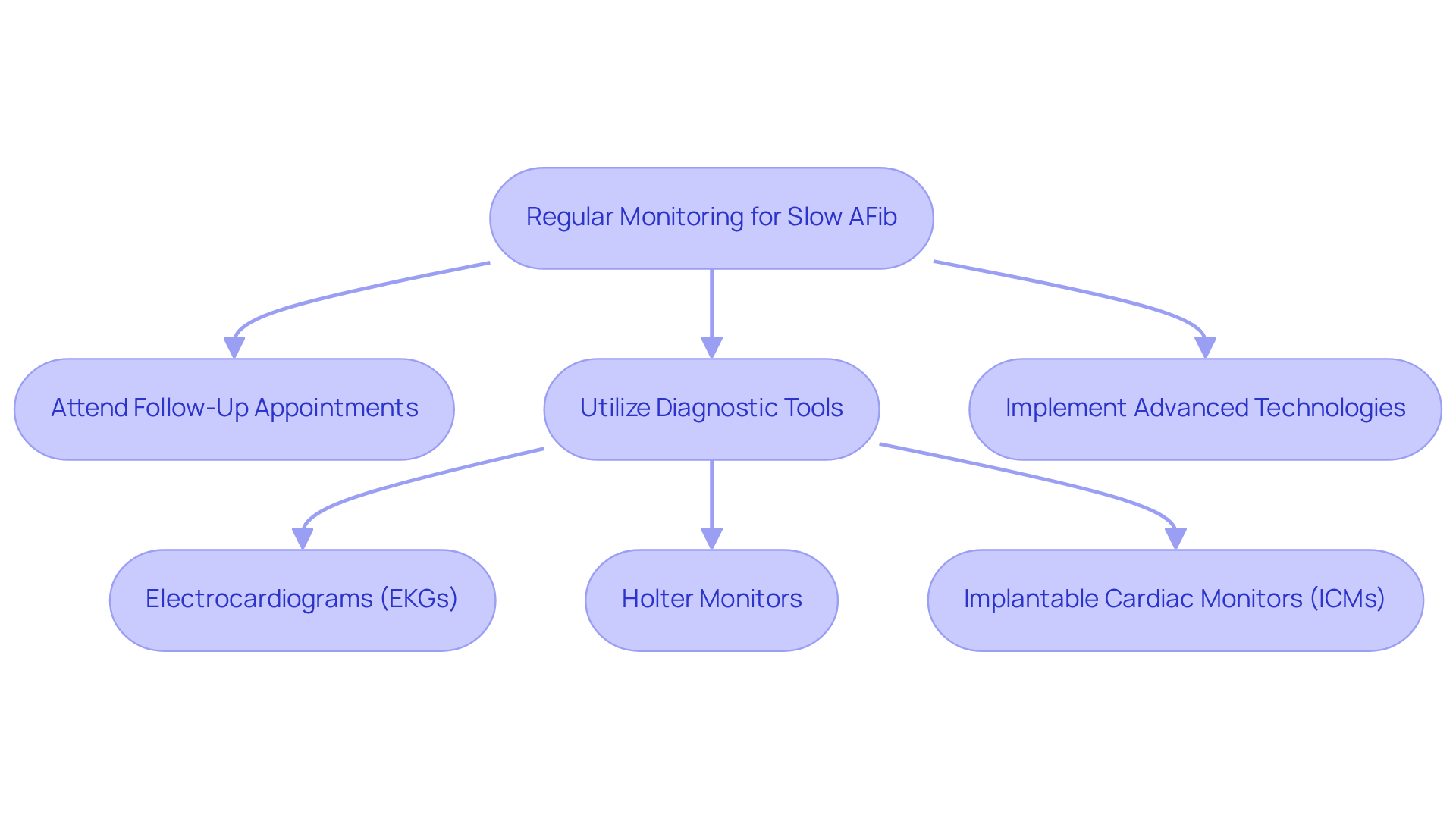
For individuals grappling with ongoing slow afib treatment who may not find relief through alternative therapies, pacemaker implantation emerges as a hopeful solution. This device plays a vital role in regulating heartbeats, leading to significant improvements in symptoms and overall quality of life. Geriatric cardiologists take the time to thoroughly assess each individual's condition, considering factors such as age, general health, and the severity of atrial fibrillation to determine the suitability of this intervention.
Recent statistics reveal that over one million traditional transvenous pacemakers are inserted each year, with leadless pacemakers (LPMs) becoming increasingly popular due to their reduced complication rates and appropriateness for older individuals. The procedure itself is minimally invasive, typically lasting just 1-2 hours, which allows for quicker recovery and less discomfort. It’s important to note that while pacemakers are not suitable for everyone with atrial fibrillation, they can be particularly beneficial for those undergoing slow afib treatment or experiencing other conduction issues.
Following implantation, many elderly patients express feelings of relief as they report improved heart rhythm stability and enhanced daily functioning. This underscores the positive impact of this technology on their health and well-being. Furthermore, advancements in pacemaker technology, including the development of leadless alternatives, continue to enhance the safety and effectiveness of this treatment, making it a more viable option for managing slow afib treatment in older adults. If you or a loved one are considering this path, know that support is available, and you are not alone in this journey.
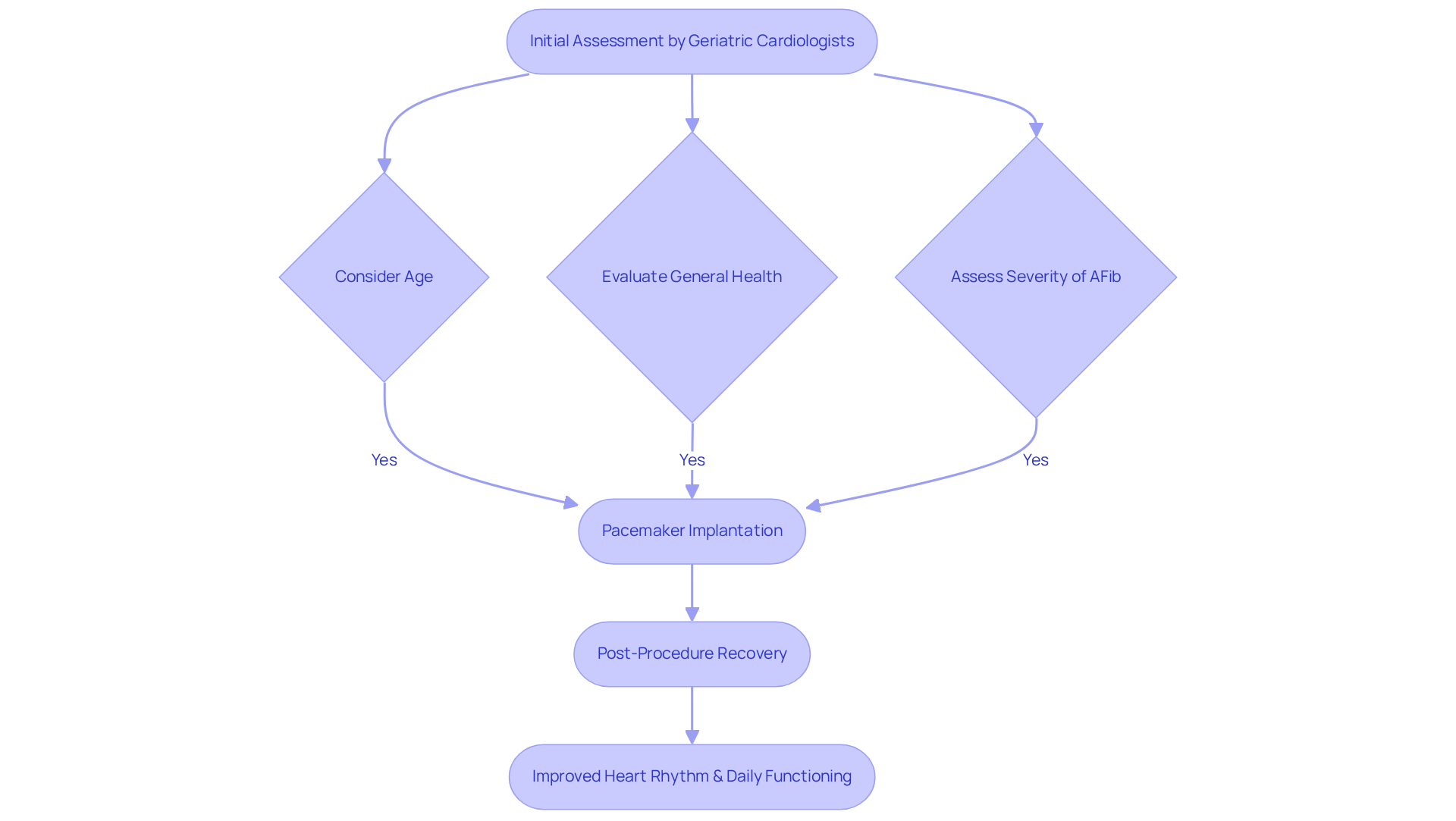
Patient education is essential for effectively managing slow afib treatment. At Amavita Heart and Vascular Health®, we truly believe in empowering individuals with knowledge about their condition, treatment options, and the necessary lifestyle changes. Our dedicated cardiologists emphasize that treatment choices should align with each individual's goals and preferences, highlighting the importance of being actively involved in their care. By providing resources such as informational brochures and access to support groups, we encourage individuals to engage in their health journey. This proactive approach not only improves adherence to treatment plans but also nurtures a supportive community among those facing similar medical challenges.
Have you ever felt uncertain about your health? Recent initiatives at Amavita have shown that when individuals are well-informed, their participation in heart health education programs increases significantly, leading to improved health outcomes. It's important to note that approximately 6 million individuals in the United States are living with atrial fibrillation. Engaging in educational programs can empower individuals to follow their treatment plans more closely, ultimately enhancing their quality of life.
Resources like UpBeat AFib offer comprehensive information about slow afib treatment, equipping individuals with the necessary tools to manage their condition effectively. Furthermore, the integration of digital health technologies at Amavita enhances patient education and engagement, providing innovative ways for patients to stay informed and connected. Remember, you are not alone in this journey; we are here to support you every step of the way.
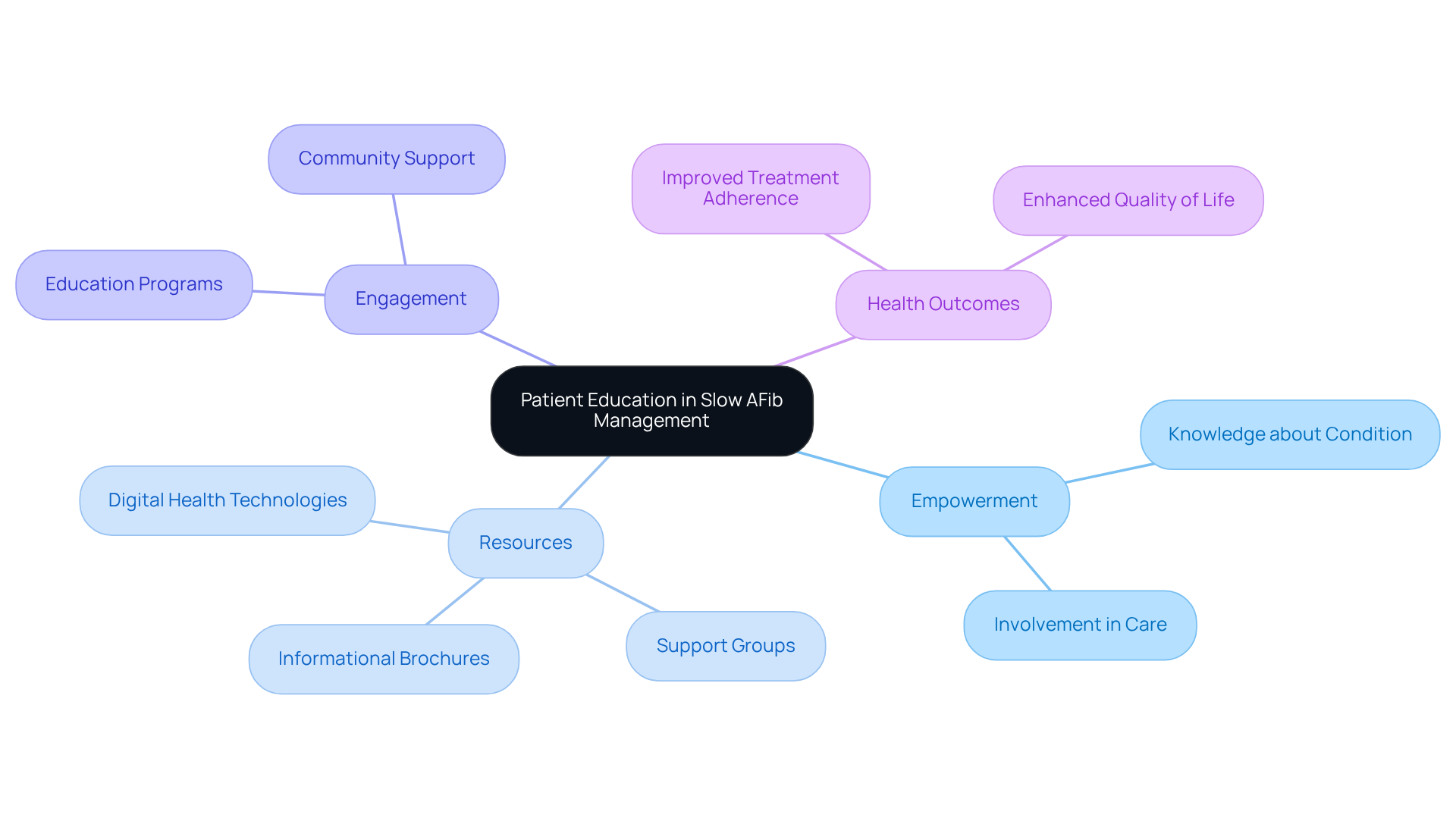
At Amavita Heart and Vascular Health, we understand that managing slow atrial fibrillation (AFib) can feel overwhelming. That’s why we emphasize the importance of personalized treatment plans tailored to your unique health profile. By aligning our strategies with your individual needs and lifestyle, we ensure that you receive the care that truly supports you. This individualized approach not only enhances the effectiveness of your treatment but also fosters a nurturing relationship between you and your healthcare providers, making your journey through slow AFib management feel more manageable.
Throughout our approach, we highlight several key treatment options that can significantly improve your quality of life. These include:
Each of these strategies is designed to empower you, addressing both your medical and emotional needs. We utilize advanced diagnostic tools and provide education to help you feel informed and confident in your care.
Navigating slow AFib treatment can indeed be challenging, but remember, you are not alone. With the right support and resources, you can take control of your heart health. Embracing personalized care, adhering to your medication regimen, and making informed lifestyle choices are vital steps toward achieving better outcomes. Our commitment to ongoing education and community support reinforces the message that you have a network of care behind you. Engaging with your healthcare providers and utilizing available resources can lead to significant improvements in managing slow AFib effectively. We are here to support you every step of the way.
What is the focus of Amavita Heart and Vascular Health regarding slow AFib treatment?
Amavita Heart and Vascular Health focuses on creating personalized treatment plans for managing slow AFib, emphasizing thorough assessments and tailored strategies that align with individual health profiles and lifestyles.
How does Amavita ensure effective treatment for slow AFib?
Amavita ensures effective treatment through comprehensive assessments, advanced diagnostic tools like genetic testing and AI-driven diagnostics, and ongoing support to strengthen the patient-provider relationship.
What role does medication management play in slow AFib treatment?
Medication management is crucial for slow AFib treatment, particularly for elderly patients. Current guidelines recommend anticoagulants and rate control agents to prevent blood clots and manage heart rhythm effectively.
What are the recommended medications for managing slow AFib?
Recommended medications for managing slow AFib include direct oral anticoagulants (DOACs) to prevent blood clots, and rate control agents such as beta-blockers or calcium channel blockers for heart rhythm management.
Why is adherence to medication important in slow AFib treatment?
Adherence to medication is important because it significantly lowers the risk of stroke and other complications associated with AFib. Studies have shown that tailored support can improve medication compliance rates.
What should patients do if they have concerns about their medications?
Patients should engage in open dialogue with their healthcare providers, sharing any concerns about their medications. This collaborative approach enhances treatment effectiveness and empowers patients in their health management.
What additional initiatives does Amavita support to enhance cardiovascular care?
Amavita supports innovative research and community outreach initiatives, including the Miami Initiative to Stop Amputation (MISA), to improve cardiovascular care and the quality of life for individuals with complex conditions like slow AFib.